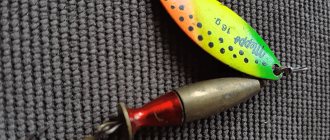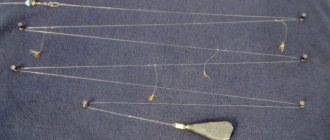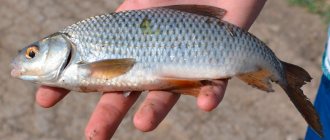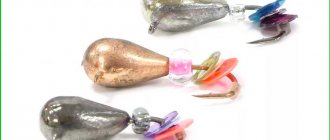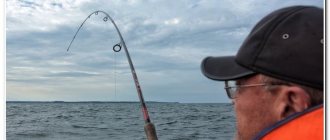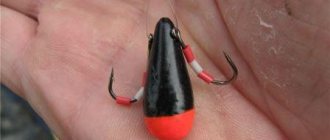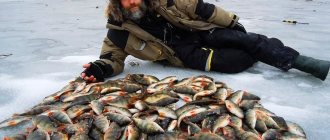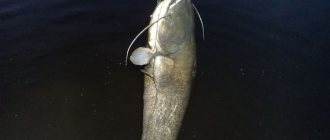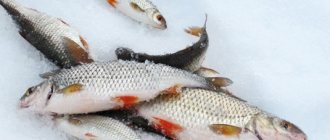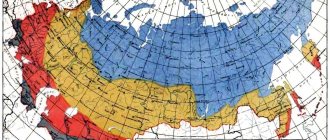Experienced fishermen differ from ordinary fishing enthusiasts in that when going on winter fishing, they must take with them not only a fishing rod and an ice ax, but also other useful fishing equipment.
A valuable piece of equipment for winter fishing is a sled. A durable and indispensable sled for winter fishing will help you carry a whole arsenal of gear and other necessary accessories that are very difficult to carry by hand directly to the fishing spot.
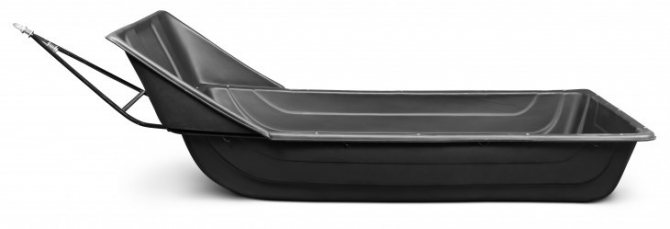
How to choose a sled for winter fishing
Modern fishermen have the opportunity to choose all kinds of factory-made designs for transporting their accessories, or to make similar sleds with their own hands.
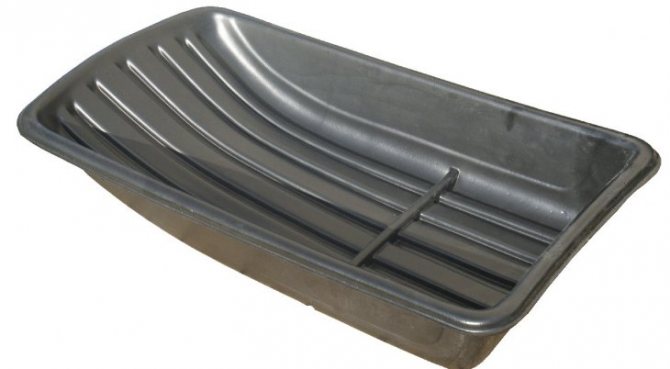
It is difficult to determine which type of sled is best for a particular fisherman - a plastic sled for fishing or a converted regular sled for children. In this matter, all fishermen make their own choice, based on their preferences and convenience.
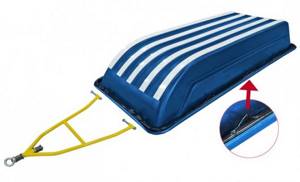
Also, many men pay attention to the strength and spaciousness of the product, ease of operation and the possibility of storage in the summer.
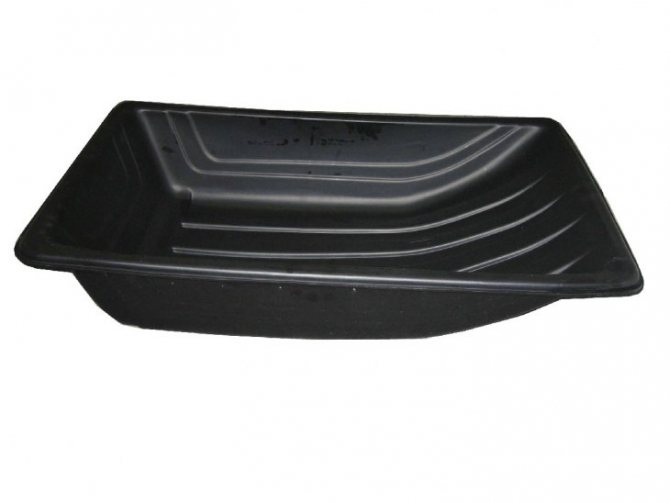
Breden (dragging, dragging)
- VK
Question: what is the difference between a dragnet and a seine and isn’t the word “breden” a synonym for a small seine? Answer: structurally no different, the difference lies in the method of application.
The classic seine is a casting tackle; it is swept out from a boat or boats, surrounding a certain part of the reservoir, after which the tackle is pulled ashore or onto the ice (during winter fishing). Breden is a winding tackle, they bring it into a reservoir and wade it to the fish, without the help of boats. There is almost no winter fishing with nonsense, with the exception of non-freezing rivers, and even then during the thaw, when the air temperature is above zero.
ATTENTION! The materials in this section are intended for informational reading only!
The length of the drags can be very different - from 6 to 70 m, but usually does not exceed 30 m. It is difficult to drag a drag longer than 30 m in the classical way, by wading, especially in deep places - the greater the depth, the more difficult it is for the fisherman to apply significant effort to the tackle ( the catcher’s own positive buoyancy interferes with good adhesion to the bottom). Therefore, long drags are often used to catch small crucian carp ponds (in autumn, when aquatic vegetation falls off), while fishermen walk on dry land, along the shore. This option is possible if the banks are sufficiently clean, without submerged bushes, etc. However, fishermen who want to achieve good catches when fishing for nonsense always prepare places for fishing in advance: they cut down trees that have fallen into the water, clear the bottom of snags and thrown into the water items.
DESIGN OF THE BAR
The design of the drag line is shown in the figure (many fishermen involved in drag fishing have no idea what the correct names for the components of the gear are). The net is used with a fairly small mesh, usually 25–30 mm on the wings, 20–25 mm in the reel. The floats on the top line are larger and are tied more often than on the fixed net; The lower selection is also made much heavier.
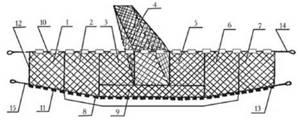
Breden and its components: 1 – right wing (2nd part);
2 – right wing (1st part); 3 – right drive; 4 – motnya; 5 – left drive; 6 – left wing (2nd part); 7 – left wing (1st part); 8 – valance; 9 – shirt; 10 – upper selection; 12 – right nag; 13 – left nag; 14 – upper chamfer; 15 – lower jib It must be said that the cords sold in stores are almost always underloaded, and their floating cords do not have sufficient buoyancy. As a result, purchased fishing rods are suitable for more or less successful fishing only in the most ideal conditions: in reservoirs without current, with a flat, hard bottom and a complete absence of snags and underwater vegetation.
In real conditions, it is not easy to catch something with a purchased fishing line: the current, even a slight one, submerges the upper catch, allowing the fish to escape; at the slightest snags and delays, the lower pick-up rises with the same result, and in very grassy reservoirs a strange thing generally happens: the load cord is twisted with the upper one into a tight cord, and the fish cannot get into the spool.
Therefore, having bought a drag, do not rush to the pond with it; it is better to disassemble the tackle and reassemble it, but with normal floating and loading. Or at least hang additional floats and sinkers (both are made cylindrical, with a cut on the side so that you can put them on the cords without disassembling the tackle; after landing on the cord, the lead sinkers are lightly tapped with a hammer, and the cut on the floats is made of hard polystyrene foam is held together with two small aluminum wire staples). In most cases, the bottom line is made shorter than the top (the difference in length reaches 10%, sometimes more) and when pulling out the central part of the line, as fishermen say, it “cuts” the fish that did not have time to get into the line, preventing it from escaping at the last moment.
A properly constructed drag moves through a pond like a tank through a children's sandbox, crushing all obstacles: it uproots sticks and small snags, rake stones and algae into the windrow, and presses not too thick reeds or cattails to the bottom. The floats are large, made of white foam and are not painted (unlike fixed nets); a bright white float can scare away fish, which sometimes try to escape from the net by jumping over the top fence.
On small drags, intended mainly for fishing on narrow rivers, the lower catch is sometimes replaced with a solid metal chain, only sections of cord 1–1.5 m long are tied at the ends. It is believed that the chain fits better all the unevenness of the bottom, allowing you to catch more bottom-dwelling fish . Another advantage of the chain: when hooked, you can pull it safely, with all your strength, without the risk of breaking, which sometimes happens with cords that have been used for a long time. The main disadvantage of drags equipped with chains is that they are too heavy, so in fairly long drags a chain 6-7 m long is tied only in the central part, under the reel, and under the wings - ordinary cords with lead weights. Chains that do not have an anti-corrosion coating quickly rust, and the rust “overeats” the sections of the network in contact with the chain. The ends of the upper and lower harness are tied to light but strong poles, the so-called nags, for which fishermen drag the tackle across the pond.
Position of the drag when fishing (top view): 1 – drag; 2, 3 – wings; 4 – load cord; 5 – floating cord
Motnya is a net bag in the middle of the tackle where the caught fish is collected. The shape of the bag is a cone; when fishing in the current, a lead weight weighing 200 g or more is attached to the very end of the reel - otherwise, when moving the tackle downstream, the reel may turn inside out under the pressure of water and end up in front of the wings. In the most commonly used sizes (12–15 m), the casting takes up about one third of the entire length of the tackle, that is, the span of the entrance to it is approximately equal to the length of the wing. For large-sized drags this ratio changes in favor of the wings, for short ones - in favor of the wings. In fact, the fishing rod is used for the most part for local fishing, not far from home, and therefore, during construction, it is “tailored” for a specific body of water or group of bodies of water.
SELECTION OF LOCATION
For river fishing, the most convenient are small, slow-flowing rivers, in which whirlpools alternate with shallow riffles. If on a river where fishing is carried out constantly, the pools are too rare, and from one fishing place to another you have to walk a couple of kilometers over rough terrain with heavy, wet gear, then the so-called “crazy trenches” are specially equipped: temporary ones are erected in convenient places with a flat bottom. dams made of flagstone, stakes and chopped turf, etc. These structures raise the water level by 0.5–1 m and retain some of the fish that entered in the spring, and local, resident fish concentrate in the resulting backwaters and reach large numbers in them sizes.
By the way, the older generation adhered to a wise rule when fishing with nonsense on the same small river: if two pools were prepared for fishing and caught on them constantly, then the third, nearby, was declared “reserved” - they did not fish themselves and did not remove snags from it and trees that had fallen into the water, making it difficult for strangers to catch. The fish were given the opportunity to feed and grow, then going out to places convenient for fishing. This rule should be followed even today, for a small river the bait is a total tackle, and with unbridled fishing you can easily end up with only loaches and verkhovkas.
On medium-sized rivers, channels, spills and creeks with weak currents, and floodplains in floodplains are chosen for fishing; It is rarely possible to conduct a drag line, stretching it from shore to shore, and the catches directly depend on the length of the gear: in a short drift, large fish will rarely be caught, and most of the catch will be small fish. On large rivers and lakes, they catch fish in any shallow water with a flat bottom, but only during periods of mass concentration of fish, otherwise the rare fish scattered throughout the reservoir will not repay the efforts of catching them.
For pond fishing, either small dug ponds are convenient, where you can wade without going into the water (see above), or large, but relatively shallow and with a flat bottom. In the second case, night fishing will be much more effective (as, indeed, in all reservoirs where the wings of the nonsense do not go close to the banks).
RIVER FISHING TACTICS
Before you go into the water with a drag in a pool suitable for fishing, you should decide how to most effectively carry the drag and, most importantly, where to pull it ashore. All other things being equal, it is better to carry the tackle against the current, although this requires somewhat greater physical effort: the wings and the fishing rod unfold more correctly, and the frightened fish most often tends downstream, rests against the wings, walks along them and ends up in the fishing rod. But quite often you have to wade downstream, for example, if the fishing is done above the dam or there are sloping banks convenient for pulling out only in the lower part of the pool. If there is no dam in the area chosen for fishing, then you can significantly increase the catch by blocking the narrow exit from the pool with a fixed net, the wing of an old nonsense, or lines with wings of sufficient length. There is no point in counting on shallow water becoming an obstacle for fish; there have been cases when pike, escaping from delirium, went along riffles no more than 5–7 cm deep. It is much safer to place an obstacle in the way of the escaping fish (not in the shallows itself, but where the depth is at least knee-deep).
Pike very often do not stay in the deep part of the pool, but at the entrance or exit from it, camouflaged in the grass and lying in wait for small fish feeding in the shallows. Therefore, to prevent predators from leaving the fished area at the moment when the drag is just being brought into the water, the following technique is used: after the exit is blocked, one or two catchers go into the narrow part of the river 10–15 m from the pool downstream, if the tackle will go against the current (or above the whirlpool, if the drag goes downstream), and they begin a noisy rush, driving out the pike standing under the banks and moving to the place where the drag lies on the shore, previously unwound and neatly laid out. Having reached the gear, the fishermen quickly pull one wing of the drag into the water, blocking the river from bank to bank - and all the fish in the fishing zone are trapped. Then the bait is lowered into the water, then the second wing and the actual fishing begins. The wings of the drag are driven as close to the shore as possible; ideally, the nags should move close to it. At the same time, the fishermen drive (usually with their feet) the fish from all places where it can hide - from under the banks washed away from below, from the roots of coastal bushes and trees sticking out into the water, etc. The lower ends of the nags should literally furrow the bottom.
The catchers pulling the nags should move as evenly as possible, so that one is not noticeably ahead of the other. If more than two people are involved in fishing, then the third fisherman should walk slightly behind the drag and, in case of a snag, untangle the drag from the underwater obstacle. As already mentioned, with a drag line (especially one equipped with a chain) you can even uproot snags from the muddy bottom, but the lower lift rises above the bottom surface and the fish leaves.
Sometimes in the process of fishing, fish, mostly small ones, become entangled in the wing of the fishnet, like in a gill net. You shouldn’t be distracted in order to get them - while chasing a roach or a small bee, you can miss large pikes: very often they do not rush around in a blind panic, but slowly retreat before the approaching nonsense, waiting to see if the fishermen will make some mistake that will allow them to escape. But if something particularly large splashes in the trash, it makes sense to approach, lift the lower catch in the central part and pick up the loot, not paying attention to the little things leaving the trash at that moment. There is no need to hesitate: if a pike or burbot has grown to trophy size in places where they are often caught with drag, it means that they have already encountered this tackle more than once and have learned to evade it well.
Having brought the nags to a dam or net barrier, fishermen double their attention: the concentration of fish between the wings at this moment is maximum, and any inaccuracy or negligence in actions will significantly reduce the catch. One of the catchers moves to the other bank, which is flatter and more convenient for pulling out, while pressing the nag as tightly as possible to the dam or net barrier. Having placed the nags on the shore 1.5–2 m from one another, they stir up the water in a shallow area surrounded by a net, trying to drive more fish into the net with a strong splash. Then they quickly pull the tackle ashore: small drags directly behind the nags, holding them vertically and retreating from the water's edge, large ones - moving the picks with their hands.
It is more difficult to pull out a drag without losing the fish if all the banks are steep and there is no convenient flat place (where fishing is constantly carried out, such sites are prepared in advance by cutting off the turf and soil with shovels). If you go up to the shore with a sheer ledge at least half a meter high and pull the drag there, you will only catch a fish that is caught in the wind and entangled with its gills in its wings. It is more effective to stay below, under the shore, and in the water, in shallow water, to pick up the lower bridle by the two ends, only occasionally pulling up the upper one. The selected wings are folded into the water near the shore, and the fish are gradually pushed into the reef. When the wings are selected, the upper part of the remaining part of the drag is folded with the lower one and the slammed tackle is pulled out to the shore.
It doesn’t hurt at the very beginning of fishing, before the surge, to properly stir up the water so that the mud goes downstream and the fish does not see the approaching gear. But in summer there is almost no current in the whirlpools, and this method is not applicable; the first pass (sinking) with a drag usually gives a minimal catch, and most of the catch ends up in the drag during the second and third sinking, when the water has already become quite turbid.
FISHING ON LAKES AND PONDS
Stagnant reservoirs, especially small ones, are densely overgrown with algae and other aquatic vegetation in the summer, so they are mostly caught in spring and autumn. An indispensable accessory for fishing in cold water is a rubber suit, while in the summer, when it’s hot, anglers often combine fishing with a refreshing swim and fish only in swimming trunks and old shoes (so as not to injure their feet with glass or other sharp objects). Spring fishing with a drag on flooded ponds in the floodplains of rivers is successful soon after the spring low water has gone: in addition to the crucian carp and tench that constantly live there, a lot of large river fish remain in the flooded lakes (and even simply in large puddles).
At the beginning of summer, when the water has already warmed up, but algae have not yet grown in abundance, you can successfully fish with a drag in large and relatively shallow (up to 1.5 m deep) ponds. Night fishing is especially catchy: sometimes so many large crucian carp are crammed into a drag line drawn along the edge of the reeds that it is only with great effort that the fish can be pulled ashore.
FISHING ALONE
Usually at least two people fish with this gear, sometimes more, so that tired fishermen can replace each other. The largest nags, especially in grassy areas or with a muddy bottom, can only be pulled by four people, two people for each nag. But sometimes you have to catch it in delirium and alone. In endangered villages, where only 3-4 residents remain, such fishing is quite common.
The most convenient for fishing alone is a short (7–8 m long) drag line on small pools of rivers and streams. The ends of the nags are made pointed, and, having stretched one wing 2–3 m, the fisherman sticks the nag into the bottom as close to the shore as possible, goes to the other side of the pool and begins to pull up the second wing. Naturally, the tackle with this method of fishing crawls along the bottom much more slowly than usual, and it is all the more necessary to put up a barrier that prevents the fish from leaving. They fish with long drags alone, using them in the manner of a seine, but casting them not from a boat, but by wading: a section of the reservoir is carefully and silently swept, then the tackle is pulled ashore.
Another method is also possible: one nag is tied to a stake firmly driven in at the water's edge, and the fisherman, stretching the tackle along the shore, enters the reservoir and drags it in a semicircle, raking in fish standing not far from the shore. In this case, an asymmetrical bridge with an elongated working wing is more convenient.
TACKLE “CHICKEN”
Tackle with this bird name can be equally considered both a dragnet without wings and a large net. But the methods of fishing with a “chicken” are much more reminiscent of fishing with a dragnet, which makes it classified as a straining tool.
Essentially, a “chicken” is a nonsense skein attached to two nags; sometimes there are even no floats and sinkers, and the net in working position is held solely by the upper and lower cords, stretched by the catchers. The maximum width of the tackle from nag to nag is 3–4 m.
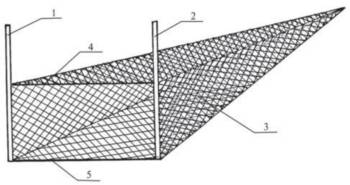
Tackle “Chicken”: 1, 2 – nags;
3 – motnya; 4 – top cord; 5 – bottom line They are caught with a “chicken” where, for some reason, the use of ordinary nonsense is impossible. For example, in rivers with strong currents or in very overgrown reservoirs. The main difference from drag fishing is that the “chicken” is often not pulled ashore - having heard a splash in the net or felt from the tremors echoing in the nags that there is a fish fighting there, the nags are immediately lifted horizontally above the water and the catch is taken out of the tackle. Naturally, due to the lack of wings, the greatest success is achieved by catching schooling, densely moving fish.
Also at night they catch large carp with “chicken” in those reservoirs where they go out to feed at night. With gear they walk along narrow paths-channels among solid reed thickets or along the edge of the thickets. For “chickens”, a net with a mesh slightly larger than that of nonsense is usually used - 30–40 mm. This is due to the fact that the “chicken” is initially aimed at larger fish; it is difficult to remove each perch or roach from the spool in the middle of the reservoir.
DAMAGE TRAP
Perhaps the fishermen borrowed the idea of this gear from hunters who successfully hunt aquatic animals with a similar design: beavers and muskrats.
Position of the dragnet-trap when fishing (top view): 1 – dragnet-throat;
2 – motnya-kutets; 3 – wings; 4 – load cord; 5 – floating cord The drag-trap has two windings, nested one inside the other, and the shorter one ends with a hole leading to the second winding, which is 1.5 m longer than the first. The first winding works as the neck of the net, and the second - as her coot. Sometimes, to prevent the strings from getting tangled, two hoops are sewn into them, further increasing the resemblance to the mentioned tackle.
In some bodies of water, a drag-trap is simply irreplaceable, for example, in small and wide floods of dammed rivers. When it’s a very long walk to the shore where you can pull out the drag, most of the large fish manage to escape from the scurry of the usual drag; the trap does not allow this to be done.
A drag trap is also suitable for passive fishing; it is enough to stick the nags into the bottom and stretch the tackle on several additional stakes. But in this case, it can no longer be called either nonsense or a filtering tool at all - it turns into a purely trapping tackle.
A. Shaganov
Related articles:
Catching catfish. channel catfish
Smooth networks, screens, scarves
Catching bleak
Eel fishing
The most common types of sleds for winter fishing
On frozen bodies of water, the most convenient types of structures for transporting heavy fishing equipment are:
Metal sleds, which in turn are divided into collapsible and non-collapsible.
Read here DIY boat motor - tips for beginners, projects, drawings and step-by-step description of the construction of the main components and elements (video + 120 photos)
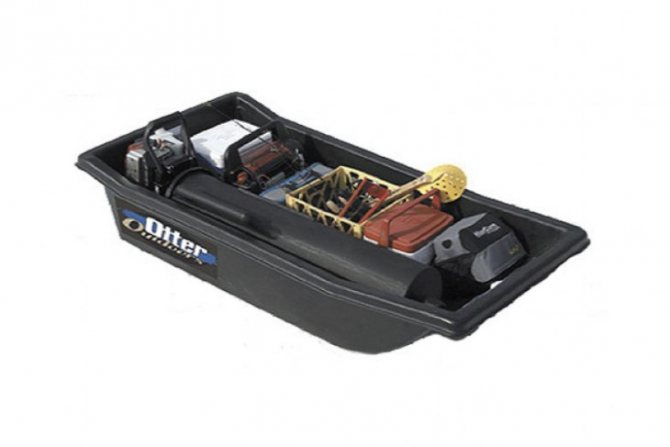
Wooden sled. In order for wooden sleds to serve for a long time and properly, they must be treated with a special impregnation and covered with waterproof paint. These precautions will help protect the wooden runners and body of the product from moisture.
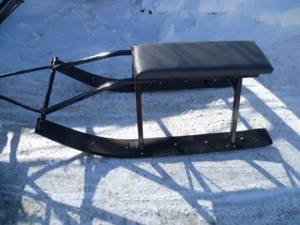
Dragging sleds for fishing. This manual transportation design has a whole list of advantages, which will be discussed below.
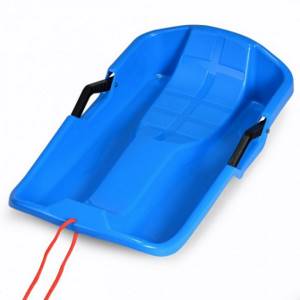
Inflatable sled. The simplest product, which is also the easiest to transport from home to the fishing spot. The only drawback is that inflatable sleds are not particularly durable and, accordingly, reliable.

Finnish sled. Many fishermen recognize only such sleds. This is a structure consisting of long runners and a high chair mounted on them.
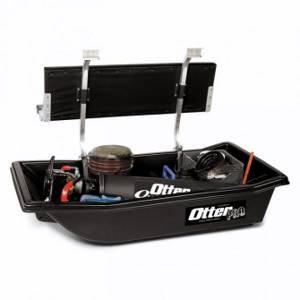
The main advantage is that you don’t have to drag a Finnish sled. You can move on them in the same way as on skis, pushing off with your feet instead of poles. In addition, the fisherman already has a comfortable place to sit near the ice hole.
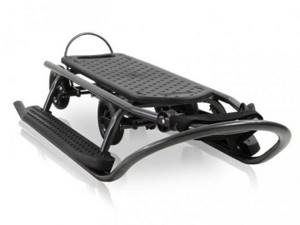
These and other types of sleds are convenient to attach to snowmobiles.
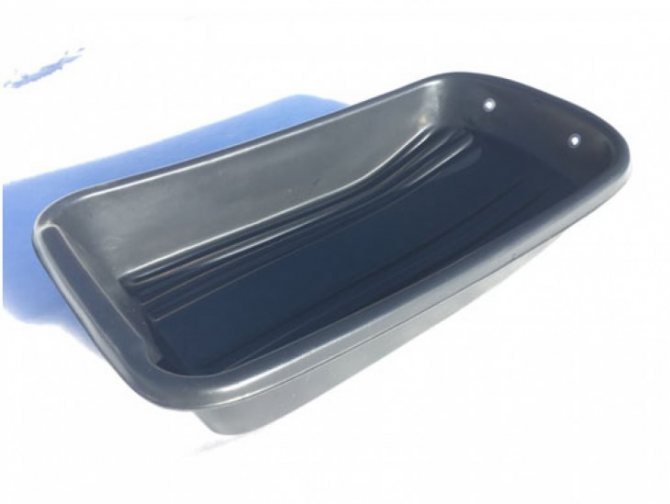
Finalization of drags
After purchasing a winter sled for fishing, you need to modify it yourself. Improvements improve performance. Fishing baskets from the store are just a plastic trough. At a minimum, you need to tie a rope to them for transportation. In the simplest version, two holes are drilled in the front part through which a cord is passed and tied. The correct fastening is two-point, and the holes should be located on both sides at an equal distance from the extreme corners. When pulled, the rope must form an isosceles triangle, otherwise during transportation they will not go straight, but will be pulled to the left or right. Experienced fishermen advise fastening the cord (strap) not at the points of the front part, but along the sides at several identical fastening points. This is relevant when transporting heavy loads (especially for snowmobiles).
Plastic fishing sleds are often equipped with additional systems of belts and tie downs to secure the load. The simplest option is to use special elastic braces passed through special fasteners or holes in the sides. The larger the load, the more solid these fastenings and ropes should be.
To protect against rubbing, home-made reinforcements are installed on the bottom of the sled for winter fishing, for example, overlays on the linoleum joint. Convenient, practical and reliable.
To protect equipment from precipitation, an awning is made of nylon fabric, with a tightening elastic band around the perimeter. When arriving at the place, you can turn them over, put them on your shoulders using special belts and sit with your back to the wind - some kind of shelter, after all. Do-it-yourself plastic fishing sleds are useful and necessary equipment for a fisherman.
Making your own sleds
Often men believe that sleds for winter fishing should be made with their own hands.
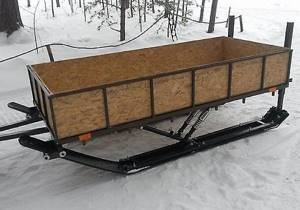
When constructing such a simple device, each angler takes into account his own needs and interests, for example, some of them need only 2 compartments in a sled box, while for others even 4 compartments are not enough to put all the little things.
Note!
- A nod for do-it-yourself winter fishing - how and what to make good gear from. 115 photos and video tips from the pros!
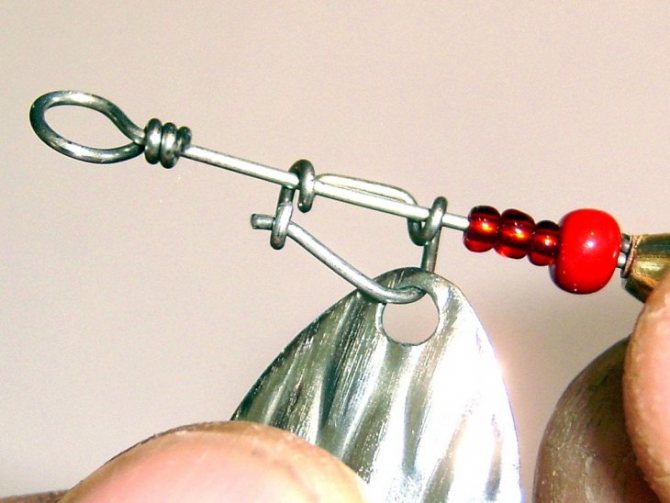
Do-it-yourself spinners - types, features of homemade spinners and their assembly (100 photos and videos)
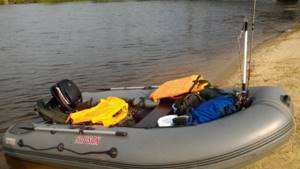
How to minimize fishing costs? Useful tips from experienced fishermen and an overview of current solutions (65 photos)
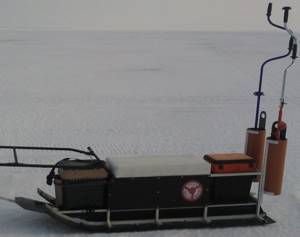
The most popular among fishermen who want to make manual transport for transporting their fishing equipment are simple wooden sleds.
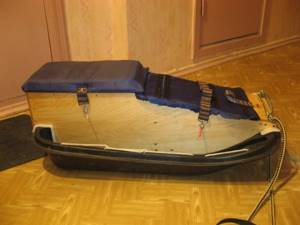
How to make a fishing sled out of wood? To do this, you need to prepare the following tools and materials: boards and bars made of pine or other reliable wood, glue intended for wood, sandpaper, drill, jigsaw and some other tools that are likely to be found in every man’s shed.
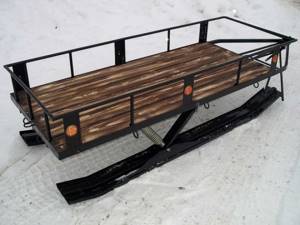
Boards are needed for the runners and cargo area, bars for fastening the runners and other elements, glue for connecting the structure. The rounded areas should be sanded and covered with waterproof paint.
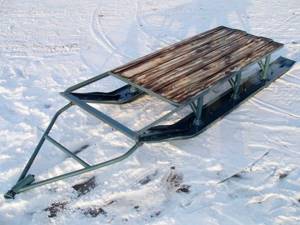
Photo of a fishing sled
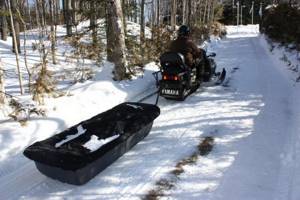
Note!
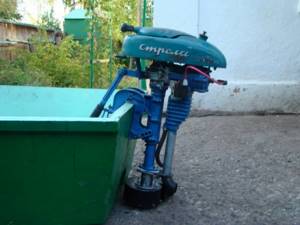
Do-it-yourself boat motor - tips for beginners, projects, drawings and step-by-step description of the construction of the main components and elements (video + 120 photos)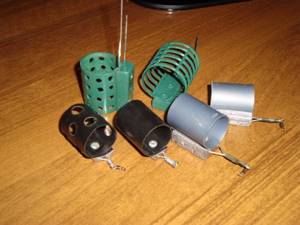
Feeder for winter fishing - secrets of use and techniques for feeding fish in winter (115 photos)
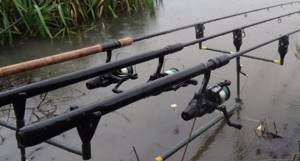
Bottom gear - the most effective types of equipment and features of casting techniques (95 photos and videos)
Help the project, share on social networks 

0

